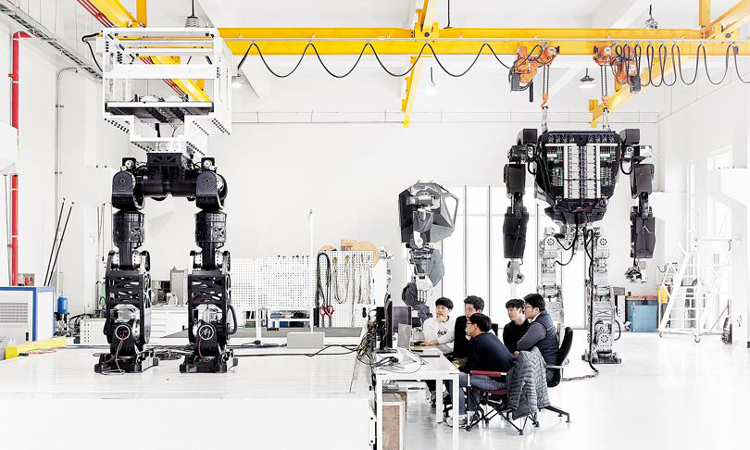As Jeff Bezos, Amazon founder and CEO sat in the cockpit of his Korean megabot creation, Method-2, all he had to say was; “Why do I feel so much like Sigourney Weaver?”
In March 2017, the Amazon founder and CEO appeared piloting the gigantic robot prototype at the company’s MARS conference in Palm Springs.
Method-2 was a fitting symbol for the event; MARS stands for Machine-learning, home Automation, Robotics and Space exploration.
Standing at four meters tall, Method-2’s cockpit, housed in its torso, is just big enough for one person. The pilot’s hands are connected to two mechanical levers that transmit movement to its huge aluminum hands.
Unlike Weaver’s character Ripley taking on a Xenomorph in Aliens; Bezos didn’t seem intent on destruction: he gave a chuckle and waved his arms wildly, causing the robot to writhe like a drunk fan at a rock gig.
But what appeared to be a billionaire’s party prank was actually the culmination of a research project that began in 2014, when industrial designer Vitaly Bulgarov received a mysterious inquiry.
For the previous 12 years, Bulgarov had worked for the film and games industries, creating designs and characters for RoboCop, Transformers and World of Warcraft.
But this job was different: Jin-Ho Yang, CEO of the South Korean firm Hankook Mirae Technology, contacted Bulgarov with a request. He wanted to “create something that’s only been possible in comics and films.”
Three years later, the result is up and running (well, walking). Method-2, which Bezos took on a wild test run, is not just any robot.
It is, its creator says, the first manned bipedal robot capable of moving 1.5 tonnes while synchronously translating the movements of its pilot. If the passenger lifts an arm, Method-2 also lifts an arm – the only difference being that the latter’s arm weighs 148kg and has fingers that are around 30cm long.
Public appearances
Whenever Method-2 appears in public, it generates a mixture of enthusiasm, amusement and skepticism.
It’s understandable that even Bulgarov spent a long time wondering whether to take it all seriously.
Despite the robot’s advanced engineering – which Hankook Mirae Technology developed in-house – Method-2 walks like a drunken Goliath.
The robot therefore remains suspended from two steel cables, like a toddler being held back by its parents’ safety reins while it learns to walk.
Baby Steps
That, however, is set to change: the company plans to install a new high-performance battery that will allow Method-2 to walk around for up to three hours at a time.
Unfortunately, that will not improve its gait, which is an issue of weight distribution.
Nor will it silence the feet that make the ground shake as they hit the floor.
But for Jin-Ho, there is no more beautiful sound.
Even as a boy, the entrepreneur dreamt of building robots. He has invested around SKW242 billion (£166m) in his company, which was set up specifically to develop Method-2.
By the end of 2017, he hopes to begin selling the robot to customers for use in hazardous environments such as the nuclear ruins of Fukushima.
(Hankook’s engineers are already working on radiation protection.) Jin-Ho says that individual components developed in Method-2’s creation could also be sold on their own, with industrial applications.
Method-2 might look like a science-fiction prop or a billionaire’s plaything.
But, to its creators, robots like this could become essential in helping humans navigate the world’s harshest, most inaccessible environments – even if that doesn’t include the depths of space just yet.



Comments are closed, but trackbacks and pingbacks are open.